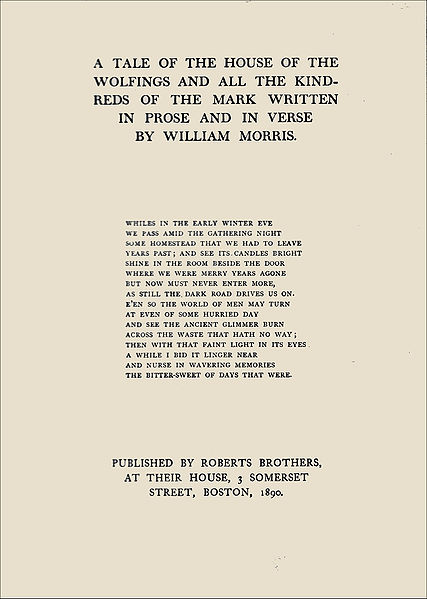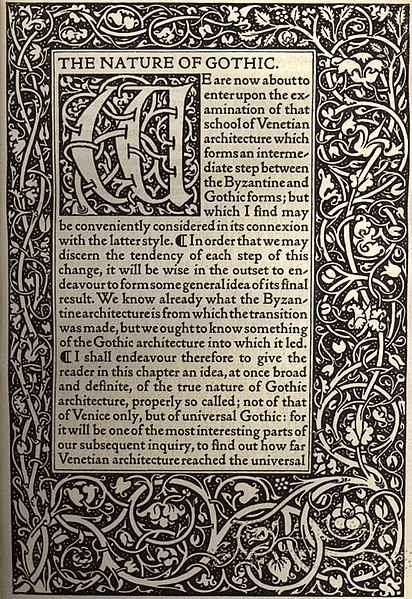In literature, an epigraph is a phrase, quotation, or poem that is set at the beginning of a document, monograph or section or chapter thereof. The epigraph may serve as a preface to the work; as a summary; as a counter-example; or as a link from the work to a wider literary canon, with the purpose of either inviting comparison or enlisting a conventional context.
Facsimile of the original title page for William Congreve's The Way of the World published in 1700, on which the epigraph from Horace's Satires can be seen in the bottom quarter.
Epigraph, consisting of an excerpt from the book itself, William Morris's The House of the Wolfings
Book design is the art of incorporating the content, style, format, design, and sequence of the various components and elements of a book into a coherent unit. In the words of renowned typographer Jan Tschichold (1902–1974), book design, "though largely forgotten today, [relies upon] methods and rules upon which it is impossible to improve, [and which] have been developed over centuries. To produce perfect books, these rules have to be brought back to life and applied". Richard Hendel describes book design as "an arcane subject", and refers to the need for a context to understand what that means.
Design by Hans Holbein the Younger for a metalwork book cover (or treasure binding)
Initial on the opening page of a book printed by the Kelmscott Press
The spine of the book is an important aspect in book design, especially in the cover design. When the books are stacked up or stored in a shelf, the details on the spine is the only visible surface that contains the information about the book. In a book store, it is often the details on the spine that attract the attention first.





